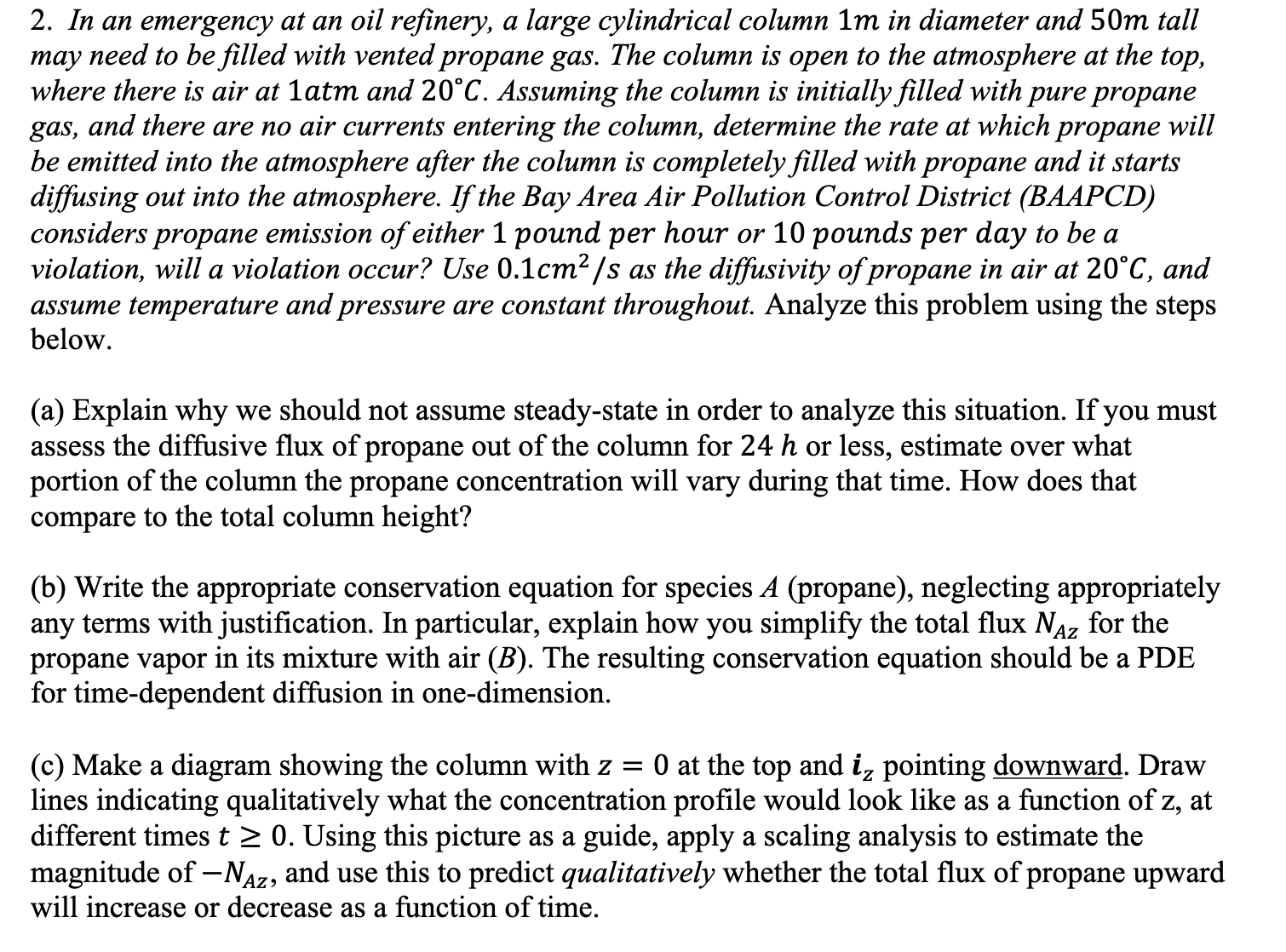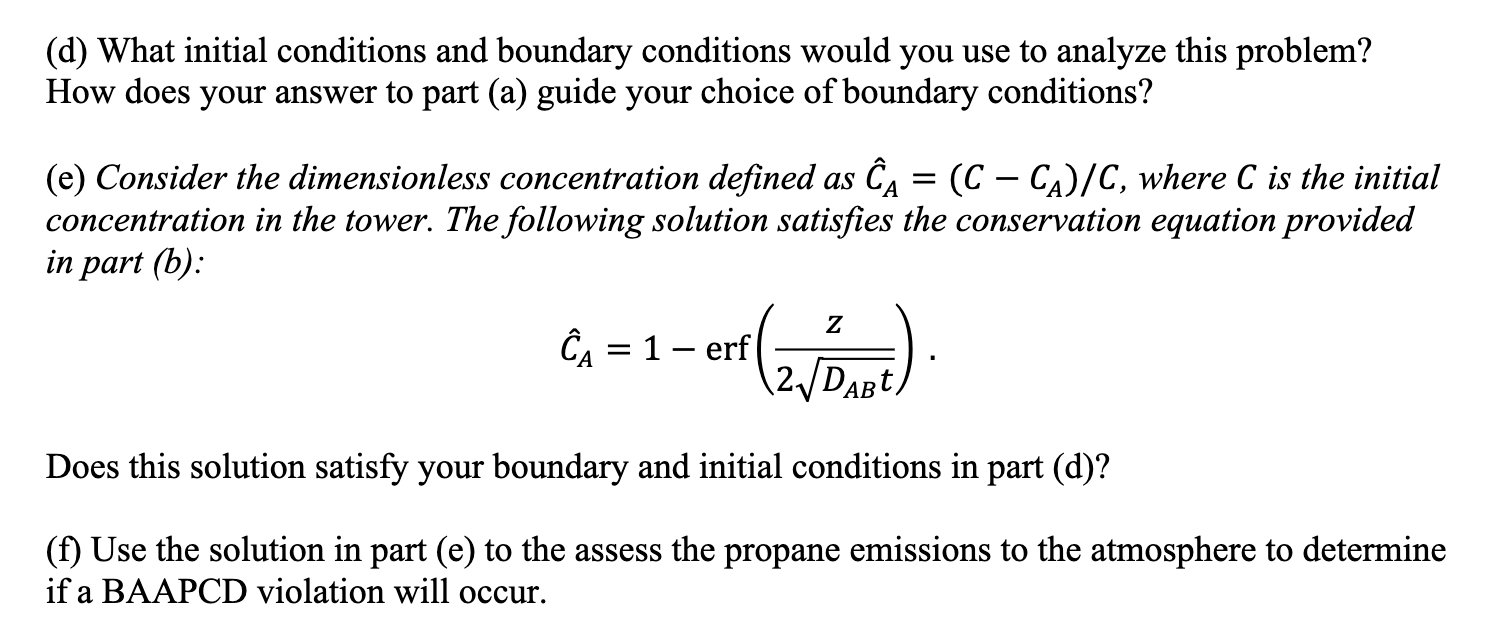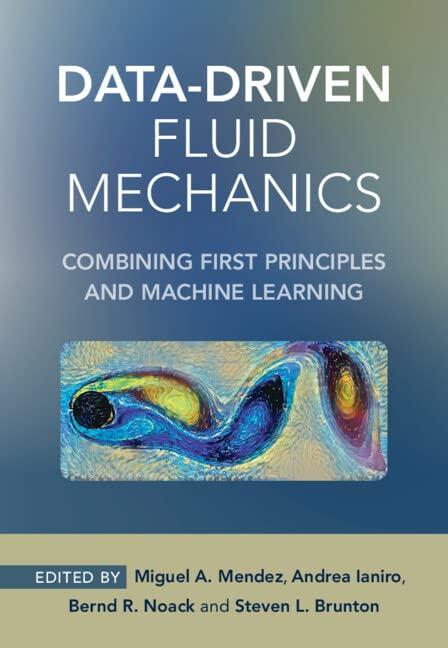Answered step by step
Verified Expert Solution
Question
1 Approved Answer
DO NOT COPY ANSWERS FROM OTHERS. 2. In an emergency at an oil refinery, a large cylindrical column 1m in diameter and 50m tall may


DO NOT COPY ANSWERS FROM OTHERS.
2. In an emergency at an oil refinery, a large cylindrical column 1m in diameter and 50m tall may need to be filled with vented propane gas. The column is open to the atmosphere at the top, where there is air at 1atm and 20C. Assuming the column is initially filled with pure propane gas, and there are no air currents entering the column, determine the rate at which propane will be emitted into the atmosphere after the column is completely filled with propane and it starts diffusing out into the atmosphere. If the Bay Area Air Pollution Control District (BAAPCD) considers propane emission of either 1 pound per hour or 10 pounds per day to be a violation, will a violation occur? Use 0.1cm2/s as the diffusivity of propane in air at 20C, and assume temperature and pressure are constant throughout. Analyze this problem using the steps below. (a) Explain why we should not assume steady-state in order to analyze this situation. If you must assess the diffusive flux of propane out of the column for 24h or less, estimate over what portion of the column the propane concentration will vary during that time. How does that compare to the total column height? (b) Write the appropriate conservation equation for species A (propane), neglecting appropriately any terms with justification. In particular, explain how you simplify the total flux NAz for the propane vapor in its mixture with air (B). The resulting conservation equation should be a PDE for time-dependent diffusion in one-dimension. (c) Make a diagram showing the column with z=0 at the top and iz pointing downward. Draw lines indicating qualitatively what the concentration profile would look like as a function of z, at different times t0. Using this picture as a guide, apply a scaling analysis to estimate the magnitude of NAz, and use this to predict qualitatively whether the total flux of propane upward will increase or decrease as a function of time. (d) What initial conditions and boundary conditions would you use to analyze this problem? How does your answer to part (a) guide your choice of boundary conditions? (e) Consider the dimensionless concentration defined as C^A=(CCA)/C, where C is the initial concentration in the tower. The following solution satisfies the conservation equation provided in part (b) : C^A=1erf(2DABtz). Does this solution satisfy your boundary and initial conditions in part (d)? (f) Use the solution in part (e) to the assess the propane emissions to the atmosphere to determine if a BAAPCD violation will occurStep by Step Solution
There are 3 Steps involved in it
Step: 1

Get Instant Access to Expert-Tailored Solutions
See step-by-step solutions with expert insights and AI powered tools for academic success
Step: 2

Step: 3

Ace Your Homework with AI
Get the answers you need in no time with our AI-driven, step-by-step assistance
Get Started


